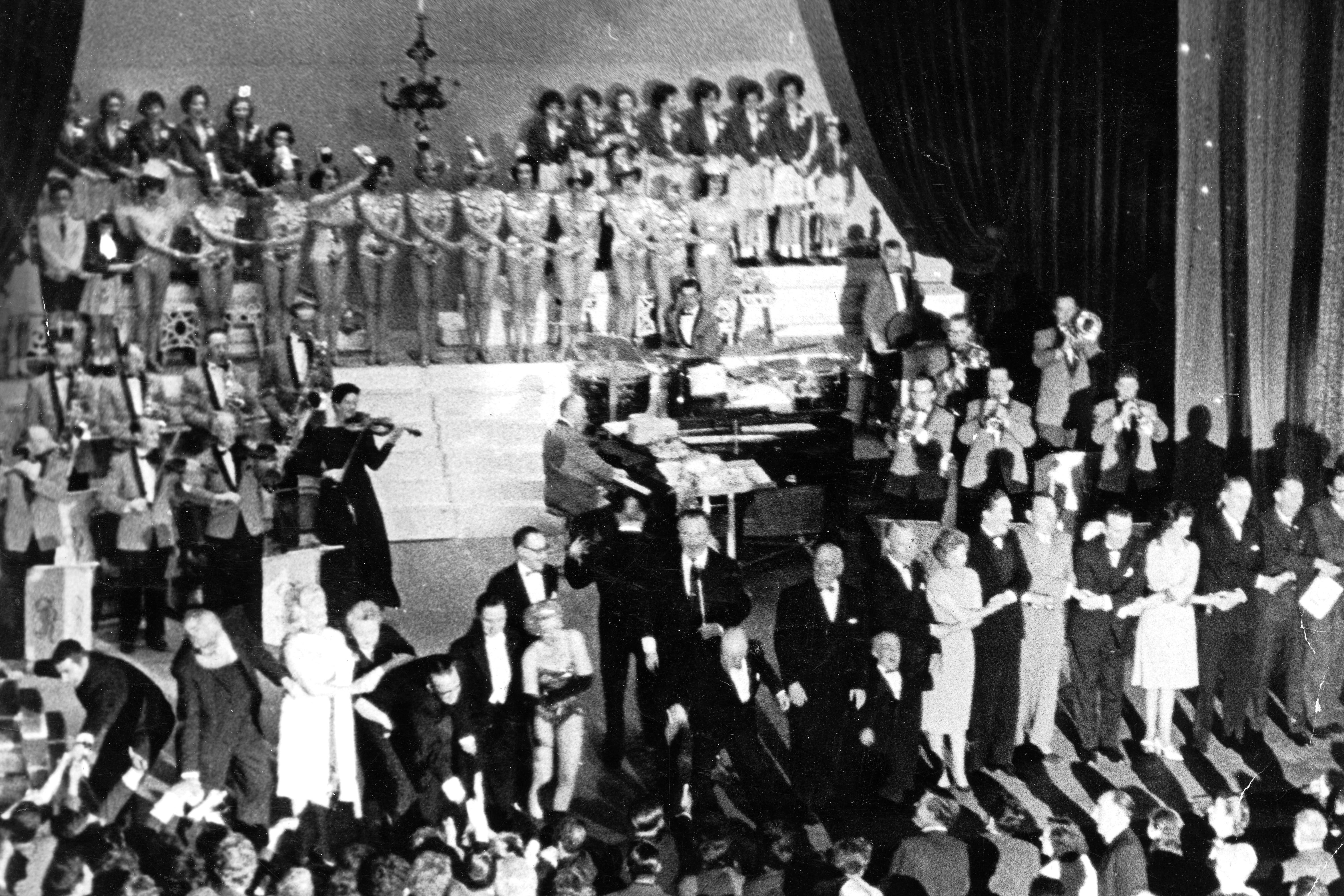A few weeks ago, a TikTok video by a South African influencer and lifestyle vlogger named Jessica Ashley Herman went viral. The video followed the day-in-a-life format, popular on the platform, in which a content-maker talks their followers through a typical day – as, say, a resident of a reputedly hip Austin suburb, or an employee of some or other tech company.
Herman’s video was notable, not for any particular innovation in the form, but for its setting: the planned city of Neom in Saudi Arabia, which is part of a vast urban megaproject launched in 2017 by Crown Prince Mohammed bin Salman. In it, Herman detailed what was presented as a typical evening as an ex-pat resident of Neom. Herman takes us along with her, as she goes about her evening – bringing her young sons to the post office, and then to a completely soulless-looking canteen, where she meets her husband, and where they and their fellow ex-pats partake of a buffet dinner.
It all takes place in an environment of uncanny sterility and desolation, somewhere between a sprawling office park and a minimum security prison. It’s all strongly reminiscent of the fiction of JG Ballard, whose novels –among them High Rise and Super-Cannes – depict lifestyles of hermetically enclosed bourgeois luxury and privilege in creepily anodyne settings.
Unlike Ballard’s obsessively imagined suburban dystopias, the violence that inheres in Neom is mostly unseen, built into its sandy foundations
Such locations, in Ballard’s novels, are invariably the setting for psychodramas of societal dissolution. The residents of the luxury apartment complex in High Rise, for instance, grow bored by their lives of bourgeois comfort, and commit themselves to an elaborate orgy of destruction and violence.
READ MORE
A surrealist at heart, Ballard was relentlessly focused on bringing repressed societal elements kicking and screaming into the cold light of day. “Prosperous suburbia was one of the end states of history,” as he put it in his late novel Millennium People. “Once achieved, only plague, flood, or nuclear war could threaten its grip.”
Neom, an unfinished luxury city for ex-pats, constructed by an entrepreneurial dictatorship in the middle of a desert, would have been right up his dismal and manicured street.
Unlike Ballard’s obsessively imagined suburban dystopias, though, the violence that inheres in Neom is mostly unseen, built into its sandy foundations. The place is part of a larger programme called Saudi Vision 2030, which aims to transform the Kingdom’s oil-dependent economy into something more dynamic and diverse, transforming the country into a global investment superpower, and an economic hub connecting Asia, Europe and the Middle-East.
[ Saudi Arabia fails in bid to get seat on top UN human rights bodyOpens in new window ]
It’s hardly a secret that Saudi Arabia is a jackboot regime steeped in blood. Its human rights record is, famously, among the worst in the world: torture and mass executions of protesters, kidnapping and dismembering of journalists, an economy awash with trafficked and exploited migrants.
But a documentary called Kingdom Uncovered: Inside Saudi Arabia, which screened on ITV last Sunday night, brought to light some hitherto unknown facts about Vision 2030. Since its launch by MBS, 21,000 migrant workers – from Nepal, from Bangladesh, from India – are reported to have died in the course of its ongoing construction.
According to the Hindustan Times, the Indian national daily English-language paper, somewhere in the region of 100,000 workers have disappeared during Neom’s construction.
In the film, a Saudi reporter named “Noura” – working under a false name to protect her identity – goes undercover to interview the migrant workers building Neom. The living and working conditions they tell her about are horrific: 16-hour working days; as few as four hours sleep per night; pay withheld for 10 months at a stretch. One man, a driver working on the project, talks about sleep deprivation as a cause of multiple crashes.
The conditions in which they work and live, as one labourer puts it, are those of “trapped slaves”. The interviewees are unnamed, their faces never shown, their voices distorted; these protective measures also, inadvertently and unavoidably, compound a horrifying sense of their depersonalisation. They are, in the eyes of the Saudi regime and of its international business and investment partners, faceless and interchangeable units of labour.
Just as troubling is the treatment of the people who previously lived on the land being developed. According to a report recently published by ALQST, a human rights advocacy group focused on Saudi Arabia, the area of the Red Sea coast which is in the process of becoming Neom was never uninhabited land, as the government claims; it had been inhabited for centuries by members of the Huwaitat tribe, who were displaced without compensation to make way for the construction.
Those who attempted to stand against their own dispossession have been subjected to brutal suppression. Fifteen peaceful protesters, say ALQST, have been given sentences ranging from 15 to 50 years, and at least five have been sentenced to death for speaking out against injustices.
Along with Saudi Arabia’s likely hosting of the 2034 World Cup, Neom is part of a vast project to rebrand the country as a sleek and futuristic hub of post-carbon capitalism. According to Saudi promotional materials, the megacity will be entirely powered by renewable energy.
If the future is Neom, it looks like hell. May its creators and its pitchmen never know peace, in this life or the next
Neom’s new director of tourism is one Niall Gibbons who, until last year, was chief executive of Tourism Ireland. In an interview not long after taking up the position, he quoted his new employer’s “vision statement”, calling Neom a “land of the future where the greatest minds and best talents are empowered to embody pioneering ideas and exceed boundaries in a world powered by imagination”.
As with so much business-babble, this manages to say nothing of substance, while communicating unintended messages at an almost subliminal frequency. In the language of the project’s promotional copy, Neom is “not just a city; it’s a vision of what the future could be”. And it does, in fact, conjure a possible future, but not in the way that Niall Gibbons or his benefactor Crown Prince MBS intend.
Neom is the kind of carefully landscaped luxury compound invoked by Ballard as “one of the end states of history”: a vision of a future in which capitalism, untethered from the restraints of democracy and human rights, reaches its final form.
Last May, buried amid the multitudinous horrors of Israel’s war on Palestine, the office of Binyamin Netanyahu released a document called “Gaza 2035″, laying out a vision for the postwar future of Gaza. The plan featured kitschy AI-generated images of futuristic skylines, solar energy fields, high-speed trains. Gaza is to become a “massive free trade zone”, its construction overseen by, among others, the government of Saudi Arabia.
One aspect of this speculative colonial fever-dream merits special mention here: its featuring of a high-speed rail link to Neom, its obvious lodestar, as “a vision of what the future could be”.
If the future is Neom, it looks like hell. May its creators and its pitchmen never know peace, in this life or the next.
- Listen to our Inside Politics Podcast for the latest analysis and chat
- Sign up for push alerts and have the best news, analysis and comment delivered directly to your phone
- Find The Irish Times on WhatsApp and stay up to date













